
























Airlines, Airports and Airliners 17 April 2024
Google Banner Ad
This Week in Airliner, Airports and Airlines
ICAO urges states to accelerate ratification of international unruly air passenger treaty.
ICAO Council adopts new international aviation Standards and Recommended practices for remotely piloted aircraft systems.
First E-Jet converted to transport cargo aircraft makes its debut.
Rolls Royce Pearl 10X engine takes to the skies for the first time.
Biometric air travel: Where your face really is your fortune.
USA FAA to install new runway safety technology.
Lufthansa Group reports impact of strikes on results and adjusts full-year outlook accordingly.
Accidents and Incidents
Bonus Video - SAAF C 130 # 409 Waterkloof to TFDC


In response to the increase in incidents of unruly passenger behavior on international flights being reported by regulators and airlines, the International Civil Aviation Organization (ICAO) issued an urgent call to its Member States to fast-track the ratification of the 2014 Protocol to Amend the Convention on Offences and Certain Other Acts Committed on Board Aircraft (Montréal Protocol 2014 or MP14).
Since its adoption on 4 April 2014, MP14 has sought to remedy jurisdictional gaps that hinder the effective prosecution of offences occurring on international flights. "On the tenth anniversary of MP14, it is crucial that Member States reinforce their commitment to safe air travel by ratifying this essential treaty," urged Salvatore Sciacchitano, President of the ICAO Council. "The global spike in unruly passenger incidents is not just a matter of passenger comfort-it's a safety and security risk that requires an immediate, coordinated response."
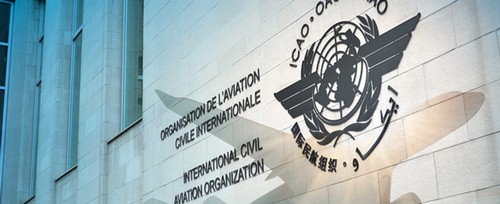
The Protocol has been ratified by 47 States from all regions of the world and entered into force on 1 January 2020.
“In addition to urging States that have not already done so to ratify the 2014 Montréal Protocol, ICAO is also encouraging governments to use the suite of tools developed by ICAO and industry partners to prevent and respond to unruly passenger crimes,” stated ICAO Secretary General Juan Carlos Salazar. “All passengers are entitled to a safe and comfortable flight experience, flight crew have the right to a conducive working environment, and we all benefit from the avoidance of costly and wasteful flight diversions.”
Guidance material is provided in ICAO's Manual on the Legal Aspects of Unruly and Disruptive Passengers (ICAO Doc 10117), which contains a list of offences most likely to be committed on board aircraft by unruly and disruptive passengers, which States may choose to incorporate into their national legislation. The Manual also elaborates on elements of an administrative sanctions regime which can assist States to handle offenders expeditiously.
Additionally, under the 1944 Convention on International Civil Aviation, ICAO has also adopted Standards and Recommended Practices (SARPs) with respect to unruly and disruptive behaviour, which are now inscribed in the Convention's Annex 17 - Security - Safeguarding International Civil Aviation Against Acts of Unlawful Interference and Annex 9 - Facilitation. The implementation of these SARPs is supported by a wide variety of ICAO guidance material.

ICAO COUNCIL ADOPTS NEW INTERNATIONAL AVIATION STANDARDS AND RECOMMENDED PRACTICES FOR REMOTELY PILOTED AIRCRAFT SYSTEMS
New aviation Standards and Recommended Practices (SARPs) adopted at the International Civil Aviation Organization (ICAO) will enhance safety and accelerate the transformation of the global air navigation system, including the integration of Remotely Piloted Aircraft Systems (RPAS).
“The sustainable development of aviation worldwide requires a performance-driven and service-oriented advanced global air navigation system. Today we have taken significant steps towards achieving this,” stated the President of the ICAO Council, Salvatore Sciacchitano.

With the Council's adoption of the new Part IV International Operations - Remotely Piloted Aircraft Systems to Annex 6 - Operation of Aircraft, the basic building blocks for a regulatory framework to enable the international operation of RPAS are now in place.
RPAS operators will be required to hold a specific operator certificate (ROC), akin to the traditional air operator certificate (AOC). This is a considerable step towards integration of RPAS into the aviation system.
The Council previously agreed to the regulatory structure for the issuance of remote pilot licences, RPAS-specific airworthiness requirements, and provisions for C2 Links frequency bands, procedures and systems.
Together, these provisions satisfy three key requirements for international air navigation: a remote pilot licence, a certificate of airworthiness, and an RPAS operator certificate.
“A sustainable future for air navigation depends on further enhancements to the accuracy and consistency of flight information,” remarked ICAO Secretary General, Juan Carlos Salazar. “These new ICAO Standards are pivotal to progress towards this goal, as they provide for system-wide information services that prioritize quality and secure data exchanges.”
The new Standards decrease the risk of the provision of inaccurate or incomplete information to Air Traffic Management (ATM) service providers and operators. The enhanced information sharing enabled by these Standards will also facilitate the optimization of air routes and networks, contributing to a reduction in aviation CO2 emissions.


“The E-Freighter program opens a new business opportunity for Embraer, meeting e-commerce's growing global demand for cargo transport and matching the high-tech E-Jets family to an unbeatable operational performance,” says Francisco Gomes Neto, President and CEO of Embraer. “We are very pleased with E190F's and E195F's fast progress during the testing period. These jets will be important tools for our customers and allow them to work with more agile and decentralized deliveries.”
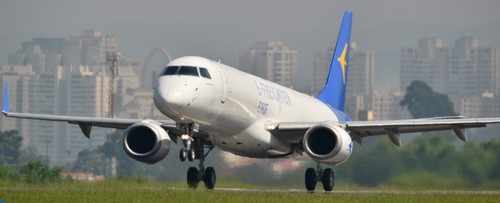
E-Jets converted to freighters will have over 50% more volume capacity, three times the range of large cargo turboprops, and up to 30% lower operating costs than narrowbodies. If combining capacity under the floor and main deck, the maximum structural payload is 13,500 kg for the E190F and 14,300 kg for the E195F.
Launched in 2022, the E190F and E195F Passenger to Freight Conversions (P2F) program involved a global network of more than 40 suppliers and more than 600 employees that dedicated more than half a million hours to the E-Freighter.

Rolls-Royce (LSE: RR., ADR: RYCEY) announces it has successfully kicked off the flight test campaign for its latest aero engine for the business aviation market, the Pearl 10X, on the company's dedicated Boeing 747 flying testbed. The engine has been selected by French aircraft manufacturer Dassault to exclusively power its brand-new flagship aircraft, the Falcon 10X.
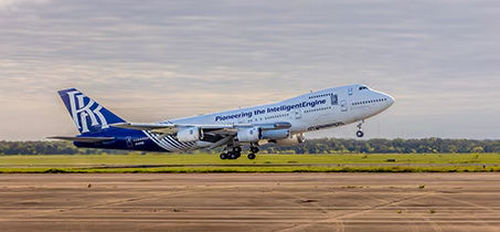
Based in Tucson, Arizona, USA, pilots and flight test engineers will put the engine through its paces over the coming months. The flight test programme will include engine performance and handling checks at various speeds and altitudes, inflight relights, tests of the nacelle's anti-icing system and fan vibration tests at various altitudes.
So far, the development programme on the ground has included the rigorous testing of the new ultra-low emissions ALM combustor, which is compatible with 100% Sustainable Aviation Fuel (SAF) and the new accessory gearbox, which allows for higher additional power extraction. The engine, which surpassed its target thrust levels on the very first test run, will be the most powerful business aviation engine in the Rolls-Royce portfolio.
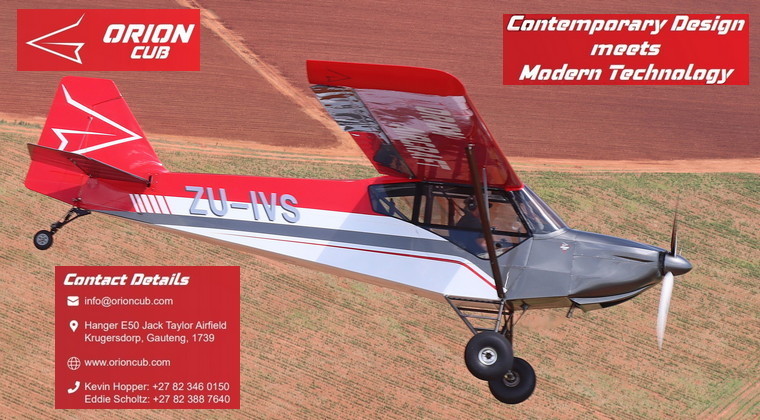
BIOMETRIC AIR TRAVEL: WHERE YOUR FACE REALLY IS YOUR FORTUNE
For anyone frustrated by the never-ending need to produce travel documents, passports, boarding cards, declarations, and approvals at multiple checkpoints along the air travel journey, then biometrics is the answer. Fortunately, it is also the future.
Recognizing this evolution, best-practice border solutions today adopt a layered approach, with digitally-enabled risk assessments and pre-clearances undertaken from the moment visas or travel authorizations are arranged, through the entire travel booking and check-in processes, and again at the border itself. Advanced software solutions like SITA's Intelligence & Targeting are, for instance, able to cross reference resources such as government watch lists, passport and visa databases to facilitate the pre-verification of passengers at booking, while passenger data is confirmed in real time at check-in using SITA Advance Passenger Processing.
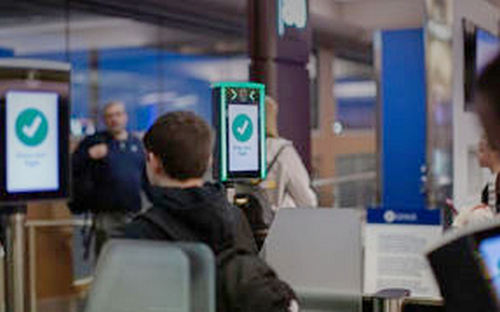
Today we can capture biometrics at the first point in the travel continuum, using a mobile device to read an ePassport chip and using the device camera to collect a live capture to verify the applicant against the passport. The image collected can be used to check biometric watchlists and then anchor the passenger's identity for the rest of the journey, verifying at each stage of the process that it is indeed the same person travelling.
Effectively this means that governments can strengthen their national borders using biometrics for identity assurance across the end-to-end process. With biometrics becoming increasingly integral to the modernization efforts of airlines and airports, the enhanced security and overall efficiency affords officials invaluable time to manage possible threats more proactively and effectively.
For passengers, the collection of biometrics reduces stress by enabling fast passage through airports, from check-in and bag drop to boarding, and then facilitating a seamless border experience on arrival.
It is hardly surprising, therefore that the International Air Transport Association's (IATA's) 2023 Global Passenger Survey notes that 75% of passengers would rather use their biometric data than passports and traditional boarding passes. Of those who have been exposed to biometrics technology during their air travels, IATA records an 85% satisfaction rate. When it comes to sharing immigration information to ensure a quicker and easier airport arrival process, the report says a hefty 87% of travelers are willing to share their data, up from 83% in 2022.
Explaining the passenger experience at the release of the 2023 report, IATA Senior Vice President for Operations, Safety and Security, Nick Careen, observed: “Passengers have made it clear: they want to spend less time booking and move through the airport faster. And they are increasingly willing to use biometric data to complete more pre-departure tasks off airport to achieve this.”

Austin-Bergstrom, Indianapolis, Nashville and Dallas Love Field will be the first airports in the nation to receive new airfield surveillance systems that will reduce the risk of runway incursions by improving air traffic controllers' situational awareness.
The Federal Aviation Administration plans to implement the Surface Awareness Initiative (SAI) system at the first four airports by July 2024. Scores of other airports will receive it by the end of 2025.

How it works: SAI uses Automatic Dependent Surveillance - Broadcast (ADS-B) data to display surface traffic to controllers at airports that do not have a surface surveillance tool. Aircraft and ADS-B-equipped vehicles appear as icons on an airport map that depicts runways, taxiways, hold ramps and other areas.
Other runway safety technologies: SAI is one of the three initiatives that make up the FAA's fast-tracked surface safety portfolio. The other tools are Approach Runway Verification (ARV) and the Runway Incursion Device (RID).
Additional safety actions: Quickly developing and deploying these technologies is one of many actions the FAA is taking to enhance safety and eliminate serious close calls following the Safety Call to Action and release of the Independent National Airspace System Safety Review Team report last year.


On a preliminary basis, the Lufthansa Group recorded an Adjusted EBIT loss of EUR 849 million in the first quarter of 2024 (previous year: loss of EUR 273 million). The loss was higher than expected due to various strikes, both by different employee groups within the Group and by employees at system partners, which impacted earnings by around EUR 350 million. The Group's Adjusted free cash flow was positive at EUR 305 million, mainly due to continued high inflows from advance ticket payments.
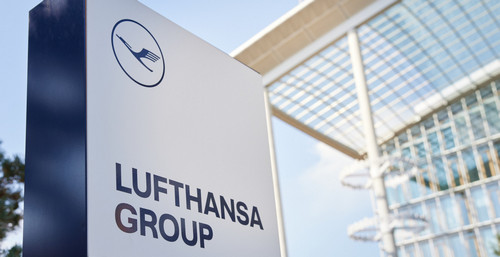
Adj. EBIT of around EUR 2.2 billion is now expected for the year as a whole (previously: stable earnings development compared to EUR 2,682 million in the previous year). Adjusted free cash flow is expected to be at least EUR 1 billion (previously: at least EUR 1.5 billion). The as yet unforeseeable effects of the recent escalation of the Middle East conflict and further geopolitical uncertainties pose risks to the Group's full year financial outlook.



Russia, Obukhovets, Leningrad region, Tosnensky district: A Russian Airlines Sukhoi Superjet 100-95B a report was received from the crew about the cracking of the windshield on the captain's side. The crew requested vectoring and descent to return to Pulkovo. Landing safely.
Russia, Komi Republic: An UTair Airlines Boeing 737-524 (WL) on 10 April 10, overhead the Komi Republic declared a PAN emergency due to a generator failure. Heading to the alternate airfield in Syktyvkar it landed Landing safely.

SAAF C 130 # 409 Waterkloof to TFDC

Google Banner Ad
 |
 |
 Copyright © 2024 Pilot's Post PTY Ltd
The information, views and opinions by the authors contributing to Pilot’s Post are not necessarily those of the editor or other writers at Pilot’s Post.
Copyright © 2024 Pilot's Post PTY Ltd
The information, views and opinions by the authors contributing to Pilot’s Post are not necessarily those of the editor or other writers at Pilot’s Post.